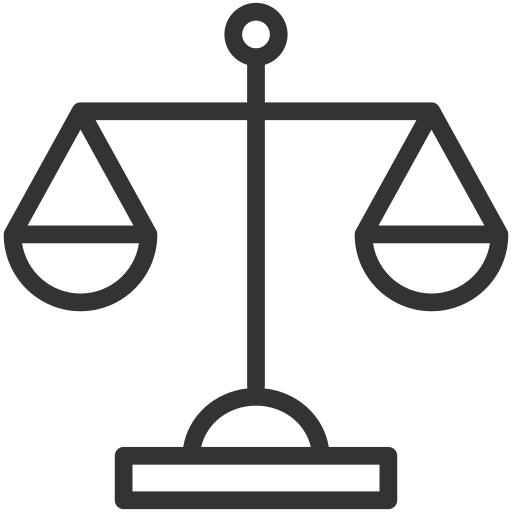|
THE MINISTRY OF
SCIENCE AND TECHNOLOGY |
THE SOCIALIST
REPUBLIC OF VIET NAM |
|
No.: 09/2016/TT-BKHCN |
Hanoi, June 09, 2016 |
Pursuant to the Law on Chemicals dated November 21, 2007;
Pursuant to the Law on Quality of Goods and Products dated November 21, 2007;
Pursuant to the Government’s Decree No. 29/2005/ND-CP dated March 10, 2005 prescribing List of dangerous goods and transport of dangerous goods by inland waterway;
Pursuant to the Government’s Decree No. 108/2008/ND-CP dated October 07, 2008 on elaboration of the Law on Chemicals and the Government’s Decree No. 26/2011/ND-CP dated April 08, 2011 providing amendments to the Government’s Decree No. 108/2008/ND-CP on elaboration of the Law on Chemicals;
Pursuant to the Government’s Decree No. 104/2009/ND-CP dated November 09, 2009 prescribing the List of dangerous goods and transport of dangerous goods by road;
Pursuant to the Government’s Decree No. 14/2015/ND-CP dated February 13, 2015 on elaboration of the Law on Railway Transport;
Pursuant to the Government’s Decree No. 20/2013/ND-CP dated February 26, 2013 defining functions, tasks, powers and organizational structure of the Ministry of Science and Technology;
At the request of the General Director of the Directorate for Standards, Metrology and Quality and the Chief of Department of Legislation;
The Minister of Science and Technology promulgates a Circular prescribing procedures for issuance of licence to transport dangerous goods which are oxidizing substances and organic peroxides (class 5) and corrosives (class 8) by road, rail and inland waterway under the within the jurisdiction of the Ministry of Science and Technology.
1. This Circular stipulates responsibility and procedures for issuance of licence to transport dangerous goods which are oxidizing substances and organic peroxides (class 5) and corrosives (class 8) (hereinafter referred to as “dangerous goods”) prescribed in:
a) Clause 1 Article 4 of the Government’s Decree No. 104/2009/ND-CP dated November 09, 2009 prescribing the List of dangerous goods and transport of dangerous goods by road;
b) Clause 1 Article 4 of the Government’s Decree No. 29/2005/ND-CP dated March 10, 2005 prescribing List of dangerous goods and transport of dangerous goods by inland waterway;
c) Clause 1 Article 22 of the Government’s Decree No. 14/2015/ND-CP dated February 13, 2015 on elaboration of the Law on Railway Transport;
2. This Circular does not apply to the transport of dangerous goods which are used for serving the following purposes:
a) Dangerous goods used for national defense and security purposes of armed forces;
b) Dangerous goods transported in special cases as prescribed in Clause 4 Article 2 of the Decree No. 104/2009/ND-CP , and Article 27 of Decree No. 14/2015/ND-CP. To be specific:
- Goods used to meet urgent demands such as prevention and control of epidemics, disasters and enemy sabotage;
- Goods in transit of foreign countries or international organizations which are not parties of or involved in any international treaties to which Vietnam is a signatory or has acceded.
3. If provisions of any international treaty on transport of dangerous goods by road, rail and inland waterway to which the Socialist Republic of Vietnam is a signatory are contrary to the provisions of this Circular, the former shall apply.
1. Vietnamese and foreign organizations and individuals (hereinafter referred to as “entities” or “entity”) providing transport service and other entities involving in the transport of dangerous goods by road, rail and inland waterway in the territory of Vietnam.
2. Regulatory authorities in charge of managing the transport of dangerous goods by road, rail and inland waterway in the territory of Vietnam.
1. “UN number (or United Nations number)” is a four-digit number, as prescribed under the UN system, used to identify dangerous goods.
2. “licence to transport dangerous goods” means a licence issued by a competent authority to an entity that needs to transport dangerous goods by road, rail and inland waterway.
3. Other terms used in this Circular are construed in the Law on Chemicals and its guiding documents.
PROCEDURES FOR ISSUANCE OF LICENCE TO TRANSPORT DANGEROUS GOODS
Article 4. Application for issuance of licence to transport dangerous goods and submission methods
1. An application for licence to transport dangerous goods consists of:
a) The application form (made using Form 1.DDK in the Appendix enclosed herewith);
b) The applicant’s licence to trade or transport dangerous goods as prescribed by laws in force;
c) Declaration for dangerous goods (made using Form 2. DMHNH- LT-PT-NDKAT in the Appendix enclosed herewith);
d) The unexpired driver’s licence which must be fit for the vehicle used for carrying dangerous goods;
dd) Unexpired certificate of vehicle registration and certificate of inspection of the vehicle’s satisfaction of technical safety and environmental protection requirements issued by competent authorities; unexpired certificate of compulsory insurance for civil liability of vehicle owner issued by an insurance agency to the vehicle owner.
If a vehicle is hired to transport dangerous goods, the applicant is required to submit the copy of the commercial contract or written agreement on transport of dangerous goods which bears signatures and seals (if any) of contracting parties or the written agreement in which details about the vehicle (including type of vehicle, number plate and payload capacity) must be indicated;
e) The unexpired certificates of completion of occupational safety and health training of persons engaged in transport of dangerous goods, which are issued according to the Circular No. 27/2013/TT-BLDTBXH dated October 18, 2013 of the Ministry of Labor, War Invalids and Social Affairs;
g) The unexpired certificates of completion of chemical safety training course issued by provincial Departments of Industry and Trade to the driver, escort and persons engaged in transport of dangerous goods;
h) The chemical safety data sheet for the dangerous good to be transported which is provided by the manufacturer or importer in Vietnamese language as prescribed in Clause 3 Article 29 of the Law on Chemicals, and accompanied by a copy of its original version provided by the manufacturer (if any). Contents of a chemical safety data sheet shall comply with provisions of the Circular No. 28/2010/TT-BCT dated June 28, 2010 of the Ministry of Industry and Trade;
i) Certificate of conformity with technical regulations and/or standards or reports on testing or inspection of packaging materials and containers of dangerous goods as prescribed in Article 5 and Article 6 of the Circular No. 44/2012/TT-BCT dated December 28, 2012 of Ministry of Industry and Trade and regulations of law on quality of goods and products;
k) The emergency response plan for chemical incidents that may occur during the transport of dangerous goods which must be approved by a competent authority as prescribed in Article 9 of the Circular No. 44/2012/TT-BCT ;
l) The plan for cleaning of equipment and maintenance of fulfillment of environmental protection requirements after transport which is made using Form 3. PALSTB in the Appendix enclosed herewith and has been approved by a competent authority according to regulations on environmental protection in force.
If more than one driver or escort is employed for carriage of dangerous goods, or multiple vehicles are used for transporting dangerous goods, or various classes of dangerous goods need to be transported, documents as prescribed in Points d, dd, e, g, h, i, k Clause 1 of this Article must be fully provided for each additional case (in case the emergency response plan is required).
2. Submission methods:
The entity that needs to transport dangerous goods by road, rail or inland waterway shall prepare an application consisting of the documents prescribed in Clause 1 of this Article and submit it either by post, directly, or through the web portal of the Sub-directorate for Standards, Metrology and Quality of the province or central-affiliated city where it follows enterprise registration procedures. To be specific:
a) If the application is submitted directly at the Sub-directorate for Standards, Metrology and Quality, and the submitted documents as prescribed in Clause 1 of this Article are not certified copies, their originals must be provided for verification purpose.
b) If the application is submitted by post, the required documents as prescribed in Clause 1 of this Article must be certified copies.
c) If the application is submitted through the web portal of the Sub-directorate for Standards, Metrology and Quality, legislative documents providing guidance on online administrative procedures adopted by the provincial government.
Article 5. Procedures for issuance of licence to transport dangerous goods
1. The Sub-directorate for Standards, Metrology and Quality shall receive and appraise the received application for issuance of license to transport dangerous goods within 05 (five) days from the receipt of the application. To be specific:
a) If the application is invalid or contains invalid documents, the Sub-directorate for Standards, Metrology and Quality shall send an email or written notice requesting the applicant to modify the application as prescribed.
After 30 (thirty) days from the date of the request, if the applicant fails to provide explanation for its failure to modify the application, the Sub-directorate for Standards, Metrology and Quality shall give a written notice of refusal to issue the license to transport dangerous goods in which reasons for refusal must be indicated. After receiving the notice of refusal, if the applicant still needs to transport dangerous goods, it must prepare and submit a new application as prescribed in Article 4 hereof;
b) If the application is valid, the Sub-directorate for Standards, Metrology and Quality shall issue a license to transport dangerous goods, using the Form 4. GPVC in the Appendix enclosed herewith, to the applicant;
c) If the quantity of dangerous goods to be transported exceeds the quantity limit specified in Column 7 of Appendix 1 on quality limits above which the emergency response plan is required enclosed with the Circular No. 44/2012/TT-BCT , the Sub-directorate for Standards, Metrology and Quality is required to conduct a physical inspection of the applicant’s headquarters or warehouse provided that it must send an email or a written notice of its intention to conduct the physical inspection to the applicant. The Sub-directorate for Standards, Metrology and Quality must conduct the physical inspection within 10 (ten) business days from the day on which the notice is sent. The physical inspection is provided for as follows:
- Specialists may be employed and an inspection team may be established to conduct the physical inspection. The Director of the Sub-directorate for Standards, Metrology and Quality shall take charge of issuing a decision to establish the inspection team;
- After completing the physical inspection, the inspection team shall make an inspection record which must include the conclusion that whether the application is satisfactory or not, and the proposal that the license should be issued or not, or unsatisfactory contents which must be remedied by the applicant. The inspection record is made in 02 (two) copies which have the same legal effect and bear signatures of members of the inspection team and the legal representative of the applicant; each party shall keep 01 (one) copy. If the applicant refuses to sign the inspection record, the inspection team must indicate the phrase “the representative of…….(the applicant's name) refuses to sign the inspection record" in the inspection record, and in this case, the inspection record shall be legally valid if it bears adequate signatures of members of the inspection team;
- If the applicant is not required to take any remedies for completing the application, within 02 (two) business days from the date of the inspection record, the Sub-directorate for Standards, Metrology and Quality shall issue the licence to transport dangerous goods, using Form 4. GPVC in the Appendix enclosed herewith, to the applicant;
- If the applicant is required to take remedies for completing the application, such remedies must be completed within a maximum duration of 30 (thirty) business days from the date of the inspection record.
The Sub-directorate for Standards, Metrology and Quality shall, within 03 (three) business days from the day on which it receives the applicant’s notice of successful completion of remedies, organize an additional inspection of results of the remedies taken by the applicant. This additional inspection shall be conducted by the inspection team as prescribed in Point c of this Clause. Results of the additional inspection shall be provided in a record which must be named as “Additional inspection record”. The conclusion that whether the remedied contents are satisfactory or not and the proposal that whether the licence should be issued or not must be specified in the additional inspection record.
The Sub-directorate for Standards, Metrology and Quality shall, within 02 (two) business days from the date of the additional inspection record, issue or refuse to issue the licence to transport dangerous goods, using Form 4. GPVC in the Appendix enclosed herewith, to the applicant. In case of refusal to issue the licence, written reasons for refusal must be provided for the applicant.
2. Validity of a licence to transport dangerous goods
The validity period of a licence to transport dangerous goods depends on the mode of transport. To be specific:
a) In case of transport by road or inland waterway:
- The licence shall be valid for each transport period or consignment of goods;
- For a licence valid for a given transport period: the maximum validity period of the licence is 12 months from the date of issue but shall not exceed the remaining period of validity of any of the documents specified in Points b, d, dd, e, g, k, l Clause 1 Article 4 hereof;
- For a licence valid for each consignment of dangerous goods: the period for transporting a consignment shall not exceed the remaining period of validity of any of the documents specified in Points b, d, dd, e, g, k, l Clause 1 Article 4 hereof. The licence shall be no longer valid immediately after completing the transport;
b) In case of transport by rail:
The licence shall be valid for each consignment of goods. The period for transporting a consignment shall not exceed the remaining period of validity of any of the documents specified in Points b, d, dd, e, g, k, l Clause 1 Article 4 hereof. The licence shall be no longer valid immediately after completing the transport.
3. If the holder of a licence to transport dangerous goods needs to modify any contents of the licence (such as the list of dangerous goods to be transport, vehicle used for transporting goods, driver, escort or persons engaged in transport of dangerous goods), it is required to submit an application for modification of the licence. The application for modification of the issued licence to transport dangerous goods shall comply with the provisions in Article 4 hereof (corresponding to the modified contents). Procedures for processing the application and issuance of the licence to transport dangerous goods shall comply with the provisions in Article 5 hereof (corresponding to the modified contents).
Article 6. Procedures for re-issuance of licence to transport dangerous goods
1. The holder of a licence to transport dangerous goods which is still valid but has been lost, stolen or damaged may apply for re-issuance of the licence.
The entity that needs to apply for re-issuance of the licence shall prepare an application according to Clause 2 of this Article and send it to the Sub-directorate for Standards, Metrology and Quality that has issued the old licence. Submission methods shall comply with Clause 2 Article 4 hereof.
2. An application for re-issuance of a licence to transport dangerous goods consists of:
a) The application form (made using Form 5. DDKL in the Appendix enclosed herewith);
b) The report on dangerous goods transported under the issued licence made using Form 6. BCHDVC in the Appendix enclosed herewith;
c) The original of the damaged licence to transport dangerous goods (if any).
3. Procedures for appraising an application for re-issuance of licence to transport dangerous goods:
The Sub-directorate for Standards, Metrology and Quality shall receive and appraise the received application for re-issuance of license to transport dangerous goods within 02 (two) business days from the receipt of the application.
a) If the application is invalid or contains invalid documents, the Sub-directorate for Standards, Metrology and Quality shall send an email or written notice requesting the applicant to modify the application.
After 30 (thirty) days from the date of the request, if the applicant fails to provide explanation for its failure to modify the application, the Sub-directorate for Standards, Metrology and Quality shall give a written notice of refusal to re-issue the license to transport dangerous goods in which reasons for refusal must be indicated. After receiving the notice of refusal, if the applicant still needs to transport dangerous goods, it must prepare and submit a new application as prescribed in Clause 2 of this Article;
b) If the application is valid, the Sub-directorate for Standards, Metrology and Quality shall issue a license to transport dangerous goods, using the Form 4. GPVC in the Appendix enclosed herewith, to the applicant. The validity period of the re-issued license to transport dangerous goods is the same as that of the old one.
Article 7. Revocation of licence to transport dangerous goods
1. A licence to transport dangerous goods shall be revoked in the following cases:
a) The licence holder has been dissolved or declared bankrupt in accordance with regulations of law but still transports dangerous goods;
b) The licence holder has incurred administrative penalties imposed by competent authorities for violations against regulations on trading or transport of dangerous goods or regulations on quality of dangerous goods twice or more times;
c) The licence holder leases or lends or deliberately alters contents of the licence;
d) The licence holder fails to comply with contents of the licence;
dd) Chemical incidents have occurred once or more times during the transport of dangerous goods due to mistakes of the licence holder that has also faced administrative penalties imposed by competent authorities for such mistakes;
e) The licence holder applies for return of the licence due to termination of its transport operations.
2. Pursuant to the provisions in Clause 1 of this Article, the Sub-directorate for Standards, Metrology and Quality shall issue a decision to revoke the licence to transport dangerous goods in which the reason for revocation must be specified.
3. The Sub-directorate for Standards, Metrology and Quality shall not receive any application for issuance of a new licence to transport dangerous goods from the entity that has the licence revoked for the reason specified in Point c or d Clause 1 of this Article within 06 months from the date of licence revocation or within 12 months from the date on which the licence is revoked for the reason in Point a, b or dd Clause 1 of this Article.
RESPONSIBILITIES OF RELEVANT ENTITIES AND REGULATORY AUTHORITIES
Article 8. Responsibilities of entities involved in the transport of dangerous goods
Entities involved in the transport of dangerous goods shall comply with regulations of laws on chemicals, transport by road, rail and inland waterway as well as quality of products and goods.
1. Responsibilities of an owner of dangerous goods:
a) Ensure that dangerous goods are packed, labeled, and subject to quality management measures according to Article 8 and Article 9 of the Government’s Decree No. 104/2009/ND-CP or Article 6 of the Government’s Decree No. 29/2005/ND-CP or Article 24 of the Government’s Decree No. 14/2015/ND-CP or Article 5, Article 6 of the Circular No. 44/2012/TT-BCT of the Ministry of Industry and Trade;
b) Have the licence to transport dangerous goods, licence to trade goods and the licence to provide goods transport services if the dangerous goods owner is also the vehicle owner as prescribed in current laws, or the certified copies of the licence to transport dangerous goods and the licence to trade goods as prescribed in current laws if the dangerous goods owner is not the vehicle owner or holder of the licence to transport dangerous goods;
c) Cooperate with local specialized agencies in handling, minimizing and taking actions against chemical incidents that may occur in the course of the transport;
d) Provide a certified copy of the licence to transport dangerous goods for the driver and escort in case the dangerous goods owner is also the holder of the licence to transport dangerous goods;
dd) Give written notification to the vehicle owner, driver and escort of the followings:
- The list of dangerous goods to be transported (name, UN number, class or division, danger number, and quantity of dangerous goods);
- Requirements to be met during the transport of dangerous goods;
- The chemical safety data sheet for dangerous good to be transported in Vietnamese language, accompanied by a copy of its original version provided by the manufacturer (if any);
- The emergency response plan for chemical incidents that may occur during the transport of dangerous goods as prescribed in Article 9 of the Circular No. 44/2012/TT-BCT in case the preparation of emergency response plan is compulsory;
e) Discharge insurance-related liabilities in accordance with regulations and pay all expenses associated with the performance of remedial measures against incidents that may occur in the course of transport of dangerous goods. The dangerous goods owner shall assume responsibility for any damage caused by late provision or inaccuracy of information, documents and instructions about dangerous goods;
g) Provide adequate personal protective equipment appropriate for the class of dangerous goods to be transported for the driver, escort and persons engaged in transport of dangerous goods;
h) Maintain packaging and containers of dangerous goods; collect, transport, manage and treat packaging and containers discarded in accordance with regulations of laws on environmental protection and management of hazardous waste;
i) Cooperate with and facilitate inspection teams’ fulfillment of their tasks of inspection of dangerous goods and vehicle used for transporting dangerous goods;
k) Submit a report on transport of dangerous goods to the Sub-directorate for Standards, Metrology and Quality of province or central-affiliated city where it follows enterprise registration procedures within 30 (thirty) days from the completion date of transport, which is made using Form 6.BCHDVC in the Appendix enclosed herewith, in case the dangerous goods owner is issued with the licence to transport dangerous goods for each consignment;
l) Submit a report on transport of dangerous goods to the Sub-directorate for Standards, Metrology and Quality of province or central-affiliated city where it follows enterprise registration procedures in December every year, which is made using Form 6.BCHDVC in the Appendix enclosed herewith, in case the dangerous goods owner is issued with the licence to transport dangerous goods for a fixed period;
m) Provide certified copies of the documents required for applying for a licence to transport dangerous goods to the entity applying for the licence to transport dangerous goods in case a vehicle is hired for transporting dangerous goods;
n) Comply with regulations on fees for processing of applications for licence to transport dangerous goods in case the dangerous goods owner applies for the licence to transport dangerous goods.
2. Responsibilities of an owner of vehicles used for transporting dangerous goods:
a) Only use vehicles included in the list of registered vehicles enclosed with the licence to transport dangerous goods issued by a competent authority;
b) Ensure that vehicles used for transporting dangerous goods bear danger markings and labels, as prescribed in Article 9 and Article 13 of the Government’s Decree No. 104/2009/ND-CP or Article 6 of the Government’s Decree No. 29/2005/ND-CP or Article 24 of the Government’s Decree No. 14/2015/ND-CP or Article 4 of the Circular No. 44/2012/TT-BCT of the Ministry of Industry and Trade, appropriate for each mode of transport;
c) Have the licence to transport dangerous goods and other documents required when driving as prescribed in current laws, or the certified copies of the licence to transport dangerous goods and the licence to trade goods as prescribed in current laws if the vehicle owner is not the dangerous goods owner or holder of the licence to transport dangerous goods;
d) Cooperate with local environmental protection agencies in handling, minimizing and taking actions against any chemical incidents that may occur in the course of the transport of dangerous goods;
dd) Provide a certified copy of the licence to transport dangerous goods for the driver and escort in case the vehicle owner is also the holder of the licence to transport dangerous goods;
e) Discharge vehicle insurance-related liabilities in accordance with regulations and pay all expenses associated with the performance of remedial measures against incidents that may occur in the course of transport of dangerous goods. The vehicle owner shall assume responsibility for any damage caused by late provision or inaccuracy of information, documents and instructions about dangerous goods;
g) Fully comply with notifications given by the dangerous goods owner of issues concerning transported dangerous goods;
h) Provide the driver and escort (if the vehicle owner is also dangerous goods owner) with the following documents:
- The list of dangerous goods to be transported (name, UN number, class or division, danger number, and quantity of dangerous goods);
- Requirements to be met during the transport of dangerous goods;
- The chemical safety data sheet for dangerous good to be transported in Vietnamese language, accompanied by a copy of its original version provided by the manufacturer (if any);
- The emergency response plan for chemical incidents that may occur during the transport of dangerous goods as prescribed in Article 9 of the Circular No. 44/2012/TT-BCT in case the preparation of emergency response plan is compulsory;
i) Adopt specific plans or measures for and carry out cleaning of vehicle upon completion of the transport or when the vehicle is no longer used for transporting such dangerous goods;
k) Provide adequate personal protective equipment appropriate for the class of dangerous goods to be transported for the driver and escort;
l) Provide certified copies of the documents required for applying for a licence to transport dangerous goods to the entity applying for the licence to transport dangerous goods;
m) Cooperate with and facilitate inspection teams’ fulfillment of their tasks of inspection of dangerous goods and vehicle used for transporting dangerous goods;
n) Submit a report on transport of dangerous goods to the Sub-directorate for Standards, Metrology and Quality of province or central-affiliated city where it follows enterprise registration procedures in December every year, which is made using Form 6.BCHDVC in the Appendix enclosed herewith, in case the vehicle owner is issued with the licence to transport dangerous goods for a fixed period;
o) Submit a report on transport of dangerous goods to the Sub-directorate for Standards, Metrology and Quality of province or central-affiliated city where it follows enterprise registration procedures within 30 (thirty) days from the completion date of transport, which is made using Form 6.BCHDVC in the Appendix enclosed herewith, in case the vehicle owner is issued with the licence to transport dangerous goods for each consignment;
p) Comply with regulations on fees for processing of applications for licence to transport dangerous goods.
3. Responsibilities of a driver of vehicle carrying dangerous goods:
a) Comply with regulations of law on safety when driving;
b) Have an unexpired driver’s licence issued by a competent authority, appropriate for the vehicle specified in the licence to transport dangerous goods, an unexpired certificate of completion of chemical safety training course issued by a provincial Department of Industry and Trade, and certificate of completion of occupational safety and health training;
c) Only transport dangerous goods when having the licence to transport dangerous goods and only transport dangerous goods which are included in the list of dangerous goods enclosed with the issued licence to transport dangerous goods; carry the copy of the licence to transport dangerous goods during the transport;
d) Inform local environmental protection agencies for their cooperation in handling, minimizing and taking actions against any chemical incidents that may occur in the course of the transport;
dd) Strictly comply with regulations on transport schedule and fully comply with notifications given by the dangerous goods owner and vehicle owner.
During the transport, the driver is not allowed to transfer dangerous goods to another vehicle, except in case of emergencies such as disaster or force majeure events provided that a notification must be promptly given to local competent authorities for cooperation;
e) Not stop, park or anchor the vehicle at a public place such as market, school or hospital, etc. When transporting hazardous chemicals which are likely to be affected by heat, the driver is not allowed to park the vehicle at sources of heat or park the vehicle too long under intense sunlight, unless the vehicle must be parked, stopped or anchored as prescribed in the Law on transport.
In case of absence of the escort, the driver shall also discharge the escort’s responsibilities;
g) The vessel master shall also assume responsibility to organize loading and unloading of dangerous goods according to instructions of the goods owner or consignor or as prescribed in Article 9 of Decree No. 29/2005/ND-CP .
4. Responsibilities of an escort of vehicle carrying dangerous goods:
a) Have an unexpired certificate of completion of chemical safety training course issued by a provincial Department of Industry and Trade, and an unexpired certificate of completion of occupational safety and health training as prescribed in current laws;
b) Carry the following documents during the transport:
- The emergency response plan for chemical incidents that may occur in the course of transport of dangerous goods in case the preparation of emergency response plan is compulsory;
- The chemical safety data sheet for transported dangerous good in Vietnamese language, accompanied by a copy of its original version provided by the manufacturer (if any);
- The manufacturer’s guidelines for transport of dangerous goods (if any) and certified copies of other documents concerning the escorted dangerous goods;
c) Inspect to ensure the fulfillment of technical and safety requirements for transport of dangerous goods before the transport and at least every 02 hours during the transport;
d) Monitor and supervise the loading and unloading of dangerous goods into and from the vehicle, and maintenance of dangerous goods, and assume responsibility for environmental health and safety;
dd) Write diary journal of the transport;
e) Inform relevant agencies and respond to any chemical incidents according to the emergency response plan for chemical incidents that may occur in the course of transport of dangerous goods or instructions on the chemical safety data sheet;
g) Fully carry personal protective equipment, appropriate for the class of dangerous goods, when contacting dangerous goods or handling chemical incidents when they occur.
5. Responsibilities of a person engaged in transport of dangerous goods:
a) Have an unexpired certificate of completion of chemical safety training course issued by a provincial Department of Industry and Trade, and an unexpired certificate of completion of occupational safety and health training;
b) Comply with guidelines for transport and handling of dangerous goods given by the dangerous goods owner and relevant regulations on occupational safety and health;
c) Fully carry personal protective equipment, appropriate for the class of dangerous goods, when contacting dangerous goods or handling chemical incidents when they occur.
Article 9. Responsibilities of each provincial People’s Committee
1. Direct specialized agencies to cooperate with Sub-directorate for Standards, Metrology and Quality in carrying out inspection of transport of dangerous goods in the province in accordance with regulations herein.
2. Promptly direct local specialized agencies, mobilize necessary forces and cooperate with the People’s Committee of urban or sub-urban district, commune, ward or town where the incident occurs in handling, responding to and mitigating consequences of any chemical incidents that occur in the course of transport.
3. In case of a serious chemical incident, promptly submit reports on the incident to relevant ministries for dispatching specialized forces to handle and remedy the incident.
Article 10. Responsibilities of Provincial Departments of Science and Technology
1. Direct Sub-directorates for Standards, Metrology and Quality to receive and appraise applications for licence to transport dangerous goods and issue licences to eligible applicants within their provinces in accordance with regulations herein.
2. Play the leading role and cooperate with specialized agencies (transport inspectorates, industry and trade inspectorates, police agencies, etc.) in carrying out inspection of transport of dangerous goods of entities that have been issued with licences to transport dangerous goods.
3. In January every year, submit consolidated reports on issuance of licence to transport dangerous goods and on transport of dangerous goods within their provinces in the previous year to provincial People’s Committees and the Directorate for Standards, Metrology, and Quality affiliated to the Ministry of Science and Technology.
Article 11. Responsibilities of Sub-Departments for Standards, Metrology and Quality
1. Receive and appraise applications for issuance/re-issuance of licences to transport dangerous goods, issue/re-issue or revoke licences to transport dangerous goods; comply with regulations on fees for processing of applications for licence to transport dangerous goods.
2. Engage in and cooperate with local specialized agencies and relevant agencies of the place where the chemical incident occurs in responding to the incident and mitigating consequences thereof.
3. Play the leading role and cooperate with relevant agencies and units in inspecting and supervising the transport of dangerous goods by the entities issued with licences to transport dangerous goods.
4. Receive reports on transport of dangerous goods submitted by entities.
Article 12. Responsibilities of Directorate for Standards, Metrology, and Quality
1. Advise and assist the Minister of Science and Technology in performing state management tasks and providing guidance on issuance of licences to transport dangerous goods in accordance with regulations herein.
2. Carry out inspection of issuance of licences to transport dangerous goods by Sub-directorates for Standards, Metrology and Quality, and compliance with regulations of law on transport of dangerous goods by relevant entities.
3. Prepare and submit consolidated reports on issuance of licences to transport dangerous goods in provinces in the previous year to the Ministry of Science and Technology in February every year or as requested.
Article 13. Effect and transition clause
1. This Circular comes into force from August 15, 2016.
2. The Circular No. 25/2010/TT-BKHCN dated December 29, 2010 of the Ministry of Science and Technology shall cease to have effect from the effective date of this Circular.
3. When this Circular comes into force, the licenses to transport dangerous goods which have been issued under the Circular No. 25/2010/TT-BKHCN shall remain effective until their expiration dates.
Article 14. Implementation organization
1. Ministries, ministerial agencies, Governmental agencies, People’s Committees of provinces and central-affiliated cities, and relevant organizations and individuals are responsible for the implementation of this Circular.
2. During implementation of this Circular, if relevant documents referred to in this Circular are amended, supplemented or superseded, the new ones shall apply.
3. Difficulties that arise during the implementation of this Circular must be promptly reported in writing to the Ministry of Science and Technology for consideration./.
|
|
PP.
MINISTER |
FORMS
Enclosed with the Circular No. 09/2016/TT-BKHCN dated June 09, 2016 of the
Minister of Science and Technology
1. Application form for issuance/modification of licence to transport dangerous goods:
Form 1. DDK
2. List of names and quantities of dangerous goods, and transport schedule; list of vehicles, drivers and escorts:
Form 2. DMHNH-LT-PT-NDKAT
3. Plan for cleaning of equipment and maintenance of fulfillment of environmental protection requirements after transport of dangerous goods:
Form 3. PALSTB
4. Licence to transport dangerous goods:
Form 4. GPVC
5. Application form for re-issuance of licence to transport dangerous goods:
Form 5. DDKL
6. Report on transport of dangerous goods:
Form 6. BCHDVC
Form
1. DDK
09/2016/TT-BKHCN
SOCIALIST
REPUBLIC OF VIETNAM
Independence – Freedom – Happiness
---------------------
APPLICATION FORM FOR ISSUANCE/MODIFICATION OF LICENCE TO TRANSPORT DANGEROUS GOODS (….)
To: …………………………………………………
Name of the applicant: ………………
Address: …………….…………….…………….…………….…………….…………….………..
Telephone:………………………….. Fax………………………………… Email: ……………...
Number of enterprise registration certificate:…………………………….. dated…………….., issued by………………..
Full name of legal representative ……………………………………… Position: ……………
Number of ID Card/ Passport: …………….…………….…………….…………….……
Issuing authority: ………………………………………. Date of issue: ....................................
Permanent residence: ……………………………………………………………..
We hereby apply for a licence to transport the following dangerous goods:
|
No. |
Name of dangerous goods |
UN number |
Class of goods |
Danger mark |
Quantity of goods (estimated) |
|
1 |
|
|
|
|
|
|
2 |
|
|
|
|
|
|
… |
|
|
|
|
|
This application consists of:
1.
2.
…
………… (name of applicant)…………. undertakes to ensure safety during transport and fully comply with regulations of law on transport of dangerous goods.
|
|
…………..
[location & date] |
Note: Mode of transport (issuance/modification of licence to transport by road/rail/inland waterway) is specified.
Form
2. DMHNH-LT-PT-NDKAT
09/2016/TT-BKHCN
|
No. |
Name of dangerous goods |
Quantity |
Vehicle owner |
Type of vehicle |
Payload capacity |
(planned) transport time |
Transport schedule |
Driver |
Escort |
||
|
Place of receipt |
Place of transshipment |
Place of delivery |
|
|
|||||||
|
(1) |
(2) |
(3) |
(4) |
(5) |
(6) |
(7) |
(8) |
(9) |
(10) |
(11) |
(12) |
|
1 |
|
|
|
|
|
|
|
|
|
|
|
|
2 |
|
|
|
|
|
|
|
|
|
|
|
Note:
(2): Name, class or division, UN number and danger mark of dangerous goods are specified according to regulations of the Decrees mentioned in this Circular;
(3): Quantity of dangerous goods to be transport is specified;
(4): Name of the vehicle owner (including address, if available) is specified;
(5,6): Type of vehicle, plate number and payload capacity (as specified in the vehicle registration certificate) are specified;
(7, 8, 9,10): Information about place of departure and place of arrival, from the place of receipt to the applicant's warehouse and from the applicant's warehouse to other locations (if any), is adequately specified;
(11, 12): Full names and numbers of ID card/Passport, dates of issue and issuing authorities of the driver and escort are specified.
|
|
…………..
[location & date] |
Form
3. PALSTB
09/2016/TT-BKHCN
|
NAME OF
ORGANIZATION/INDIVIDUAL…… |
SOCIALIST
REPUBLIC OF VIET NAM |
|
|
………….. [location & date] |
1. Location where the vehicle, packaging, containers and equipment used during the transport are washed and cleaned.
2. Facilities used for washing and cleaning of the vehicle, packaging, containers and equipment used during the transport.
3. Treatment of solid and liquid waste generated from the washing and cleaning of the vehicle, packaging, containers and equipment used during the transport.
4. Other relevant environmental protection activities.
(The abovementioned contents must be approved by the Department of Natural Resources and Environment of province where washing and cleaning activities are carried out in accordance with regulations of the Law on Environmental Protection and its guiding documents).
|
|
Vehicle
owner/Dangerous goods owner |
Form
4. GPVC
09/2016/TT-BKHCN
LICENCE TO TRANSPORT DANGEROUS GOODS (….) 1. Name, class and UN number of dangerous goods: 2. Name and address of the applicant: 3. Name of vehicle owner: 4. Name, plate number and payload capacity of vehicle: 5. Name of driver: 6. Name of escort: 7. Quantity of goods: 8. Place of departure and place of arrival: 9. Transport period: …..months, from the signing date of this licence (or the date of consignment…..)
|
Note: Licensed mode of transport (transport by road/rail/inland waterway; or re-issuance) must be specified.
- All names of dangerous goods to be transported are specified in Section 1; if there are different classes (names) of dangerous goods to be transported, they must be specified in an Appendix enclosed with the licence. In this case, the phrase “as specified in Appendix 1 enclosed with this licence” shall be specified in this Section.
- If a licence is issued for more than one vehicle, driver or escort, contents of Sections 3, 4, 5, 6 of the licence shall be prepared in an Appendix with similar contents (in Sections 4, 5, 6, 11, 12) in Form 2. DMNHN-LT-PT- NDKAT in this Appendix. In this case, the phrase “as specified in Appendix 2 enclosed with this licence” shall be specified in Sections 3, 4, 5, 6 of the licence.
- If different quantities of goods are transported to different places, contents of Sections 7, 8, 9 shall be prepared in an Appendix with similar contents (in Sections 3, 7, 8, 9, 10) in Form 2. DMNHN-LT-PT-NDKAT in this Appendix. In this case, the phrase “as specified in Appendix 3 enclosed with this licence” shall be specified in Sections 7, 8, 9 of the licence.
- In case of re-issuance/modification of the licence, the licence shall be named as the (re-issued/modified) licence to transport dangerous goods.
- All appendixes enclosed with the licence (if any) must bear both adjoining seals and seals without signature (affixed to the top of the page) as prescribed.
Form
5. DDKL
09/2016/TT-BKHCN
SOCIALIST
REPUBLIC OF VIETNAM
Independence – Freedom – Happiness
---------------------
APPLICATION FORM FOR RE-ISSUANCE OF LICENCE TO TRANSPORT DANGEROUS GOODS
To: …………………………………………………
Name of the applicant: ………………
Address: …………….…………….…………….…………….…………….…………….………..
Telephone:………………………….. Fax………………………………… Email: ……………...
Number of enterprise registration certificate:…………………………….. dated…………….., issued by………………..
Full name of legal representative ……………………………………… Position: ……………
Number of ID Card/ Passport: …………….…………….…………….…………….……
Issuing authority: ………………………………………. Date of issue: ..................................
Permanent residence: ……………………………………………………………..
In order to transport dangerous goods, ………..(name of the applicant) has been issued with the licence to transport dangerous goods No………………. dated………………. by the Sub-directorate for Standard, Metrology and Quality The following dangerous goods have been licensed for transport:
|
No. |
Name of dangerous goods |
UN number |
Class of goods |
Danger mark |
Quantity of goods (estimated) |
|
1 |
|
|
|
|
|
|
2 |
|
|
|
|
|
|
… |
|
|
|
|
|
Because of ……(specify the reason, such as loss or damage, etc.) of the issued licence, ………….(name of the applicant) hereby requests your Sub-directorate for Standards, Metrology and Quality to consider re-issuing the licence to transport dangerous goods.
This application consists of:
1.
2.
…
(name of applicant)…………. undertakes to ensure safety during transport, fully comply with regulations of law on transport of dangerous goods, and assume legal responsibility for all statements herein./.
|
|
…………..
[location & date] |
Form
6. BCHDVC
09/2016/TT-BKHCN
|
NAME OF
ORGANIZATION/INDIVIDUAL…… |
SOCIALIST
REPUBLIC OF VIET NAM |
|
|
………….. [location & date] |
REPORT ON TRANSPORT OF DANGEROUS GOODS
(from………………[date] to…………………….[date])
To: ……… (Name of the authority issuing the licence to transport dangerous goods)
1. General information:
Name of vehicle owner/dangerous goods owner: …………………
Address: ……………………………………………………………………………………………..
Telephone: …………………….. - Fax: …………………….. Email: …………………
Number of the licence to transport dangerous goods: ……………………….. Date of issue:……………………………..
2. General information about the transport of dangerous goods in the reporting period.
3. Detailed information about dangerous goods transported in the reporting period.
|
No. |
Name of dangerous goods |
Quantities |
Type of vehicle |
Transport time |
Transport schedule |
Driver |
Escort |
||
|
Place of receipt |
Place of transshipment |
Place of delivery |
|
|
|||||
|
1 |
|
|
|
|
|
|
|
|
|
|
… |
|
|
|
|
|
|
|
|
|
4. Reporting on cleaning and removal of danger markings and labels on the vehicle after transport of dangerous goods: ....
5. Reporting on implementation results of the plan for prevention and response to environmental emergencies in the course of transport in the reporting period: …………………………………………
6. Plan for transport of dangerous goods for the next reporting period: ……………………………
7. Other issues, if any: …………………………………………………………………..
8. Conclusion and recommendations: …………………………………………………………………………
|
|
Vehicle
owner/Dangerous goods owner |
------------------------------------------------------------------------------------------------------
This translation is made by THƯ VIỆN PHÁP LUẬT, Ho Chi Minh City, Vietnam and
for reference purposes only. Its copyright is owned by THƯ VIỆN PHÁP LUẬT
and protected under Clause 2, Article 14 of the Law on Intellectual Property.Your comments are always welcomed



















